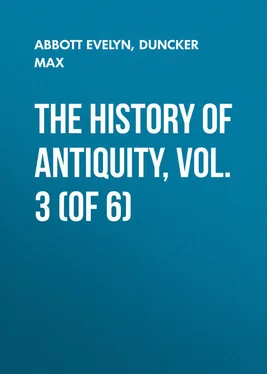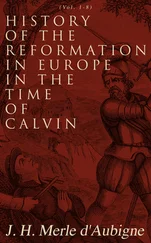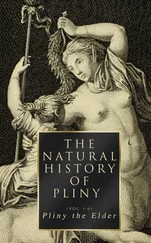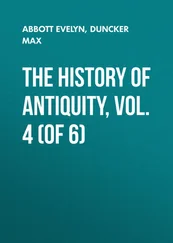Evelyn Abbott - The History of Antiquity, Vol. 3 (of 6)
Здесь есть возможность читать онлайн «Evelyn Abbott - The History of Antiquity, Vol. 3 (of 6)» — ознакомительный отрывок электронной книги совершенно бесплатно, а после прочтения отрывка купить полную версию. В некоторых случаях можно слушать аудио, скачать через торрент в формате fb2 и присутствует краткое содержание. Жанр: foreign_antique, foreign_prose, Историческая проза, на английском языке. Описание произведения, (предисловие) а так же отзывы посетителей доступны на портале библиотеки ЛибКат.
- Название:The History of Antiquity, Vol. 3 (of 6)
- Автор:
- Жанр:
- Год:неизвестен
- ISBN:нет данных
- Рейтинг книги:5 / 5. Голосов: 1
-
Избранное:Добавить в избранное
- Отзывы:
-
Ваша оценка:
- 100
- 1
- 2
- 3
- 4
- 5
The History of Antiquity, Vol. 3 (of 6): краткое содержание, описание и аннотация
Предлагаем к чтению аннотацию, описание, краткое содержание или предисловие (зависит от того, что написал сам автор книги «The History of Antiquity, Vol. 3 (of 6)»). Если вы не нашли необходимую информацию о книге — напишите в комментариях, мы постараемся отыскать её.
The History of Antiquity, Vol. 3 (of 6) — читать онлайн ознакомительный отрывок
Ниже представлен текст книги, разбитый по страницам. Система сохранения места последней прочитанной страницы, позволяет с удобством читать онлайн бесплатно книгу «The History of Antiquity, Vol. 3 (of 6)», без необходимости каждый раз заново искать на чём Вы остановились. Поставьте закладку, и сможете в любой момент перейти на страницу, на которой закончили чтение.
Интервал:
Закладка:
15 15 Frag. 1, 2 in G. Smith, "Disc." pp. 266, 267.In the summary of his achievements (on the tablet of Chalah) the king says that he has taken Dur Kurigalzu, that he has offered sacrifice at Sippara, Nipur, Babylon, Borsippa, Kutha, and Ur, that in the beginning of his reign he ruled from Dur Kurigalzu to Nipur.
16 16 Ménant, loc. cit. p. 139.The king of Babylon, against whom he fought and whom he compelled to open the gates of his fortresses and of Babylon, is not mentioned by Tiglath Pilesar. We must assume, from the canon of Ptolemy, that it was Nabonassar who bowed himself before the weight of the arms of Assyria. Yet the obedience of Babylon was not secured. Fragments of the detailed annals of Tiglath Pilesar inform us that his general again fought against the Babylonians, that he himself again conquered a city which the Babylonians had taken, that in the region of Tel Assur he sacrificed to Merodach the god of Tel Assur.
17 17 The list of rulers inserts a second campaign of Tiglath Pilesar to the land of the stream in the year 737 B.C.; frag. 8, 11. 18, 19, 52-55 in G. Smith, loc. cit. pp. 277, 280, 281.An inscription of Chalah narrates that Tiglath Pilesar laid waste Bit Amukan and Bit Sahalla, and took their kings Nabu-sabzi and Zakiru prisoners; that he besieged king Kinziru in Sapiya (Sape), his capital, and added to Assyria Pillutu on the border of Assyria and Elam; that he received the tributes of the kings of the Chaldæans, of Balasu, the son of Dakkuri, of Nadin of Larrak, and Merodach Baladan, the son of Yakin, the king of the sea coast.
18 18 Ll. 12-19 in G. Smith, "Disc." pp. 255, 256.The large tablet tells us more at length. "Pillutu on the borders of Elam I added to Assyria; the Chaldæans I removed from thence and placed in the midst of Assyria. The warriors of Nabu-sabzi, the son of Silani, I defeated under the walls of his city of Sarrapani, and I crucified him before the great gate of his city. Five thousand five hundred of his people I took captive; his sons, his daughters, his gods I carried away: his city and the cities round about it I destroyed and burnt. Zakiru, the son of Sahalli, and his chieftains I captured; I put them in irons and brought them to Assyria; 5400 of the people of Bit Sahalla I captured; I laid waste all the districts of Bit Sahalla and united them to Assyria. The numerous army of Kinziru, the son of Amukan, I defeated before the great gate of his city, Sapiya; I besieged him and overthrew all his cities. Bit Silan, Bit Amukan, Bit Sahalla, I have laid waste throughout their whole extent; I received the tribute of Balasu, the son of Dakkuri, and of Nadin of Larrak; Merodach Baladan, the son of Yakin, the king of the sea-coast, was overcome by the fear of Asshur, my lord: he came to Sapiya and kissed my feet, and I received his tribute."
19 19 Ll. 14-28 in G. Smith, "Disc." pp. 258-260.
The canon of Ptolemy represents Nadius as succeeding Nabonassar of Babylon in the year 733 B.C. Is the Nabu-sabzi of Bit Silan whom Tiglath Pilesar defeats near the city of Sarrapani the king Nadius of the canon; and ought his name to be altered in the canon to Nabius? According to the canon Nadius reigned only two years (733, 732 B.C.); the campaign of Tiglath Pilesar, which ended in the conquest and execution of Nabu-sabzi, must therefore have taken place in the year 732 B.C. After the conquest of Nabu-sabzi, as the inscriptions told us, Tiglath Pilesar subjugates Kinziru of Bit Amukan, when he had besieged Sapiya, his capital; in this city he receives the homage of Merodach Baladan. The list of rulers places the campaign against Sapiya in the year 731 B.C. In the canon of Ptolemy, Nadius is succeeded by a joint rule: from the year 731 to 727 B.C. Chinzirus and Porus reign over Babylon. Is the Kinziru of Bit Amukan the Chinzirus of the canon?
After the subjugation of Merodach Baladan, king of the sea-coast, i. e. the coast of the Persian Gulf, Tiglath Pilesar's dominion extended over the whole region of the Euphrates. He assures us that "he laid waste the land of Chaldæa throughout its whole extent," and "received tribute from all the Chaldæans;" that "he possessed the whole land of Kardunias (Babylonia), and was lord over it;" 20 20 G. Smith, loc. cit. pp. 255, 258.
and with perfect truth, for an inscription of king Sargon tells us, that Bit Amukan, Bit Dakkur, Bit Silan, Bit Sahalla, Bit Yakin form the whole of the land of the Chaldæans. 21 21 Oppert, "Dur Sarkayan," p. 20; Ménant, "Annal." pp. 160, 181.
Tiglath Pilesar calls himself "king of Asshur, king of Babylon, king of Sumir and Accad;" he claims the full title of the kings of Babylon. The names of the principalities of Chaldæa are obviously taken from their dynasties. Nabu-sabzi is called the son of Silan, and his land Bit Silan; Merodach Baladan is the son of Yakin, and his land is Bit Yakin. Shalmanesar II., as we saw (Vol. II. p. 239), spoke of Israel as Bit Omri, i. e. the house of Omri. The Chinzirus of the canon of Ptolemy enables us to assume that Tiglath Pilesar after the defeat of Kinziru of Bit Amukan placed this Kinziru as a vassal-king or viceroy over Babylon, a proceeding which recurs often enough in the proceedings of the kings of Asshur towards conquered principalities and lands.
The canon of Ptolemy does not make Chinzirus the sole king of Babylon. From 731 B.C. to 727 B.C. Chinzirus and Porus are said to have reigned together – a joint sovereignty, of which this is the only instance in the canon. Strikingly enough their two reigns end in the same year, and this, 727 B.C. is the very year in which, according to the Assyrian canon, Tiglath Pilesar's reign is brought to a close. In the excerpt from Berosus' list of the kings of Babylon, given by Polyhistor, of which Eusebius has preserved some very scanty fragments, the 45 kings who reigned over Babylon for 526 years are followed by "a king of the Chaldæans, whose name was Phul." 22 22 Vol. II. p. 27; Euseb., "Chron." 1, p. 26, ed. Schöne.
If the Babylonians named Tiglath Pilesar Phul in their list of kings, and if Porus in the canon of Ptolemy is a mistake for Polus (Pul), the Babylonians, in order to conceal their dependence on Assyria, must have placed their countryman before the stranger, the vassal king before the real king in their series of rulers.
The Hebrew Scriptures tell us that Phul of Asshur marched against Israel; Menahem of Israel paid Phul a tribute of 1000 talents of silver, and the king of Assyria returned into his land. Then Ahaz of Judah sent messengers to king Tiglath Pilesar of Asshur to save him out of the hand of Rezin, king of Damascus, and Pekah, king of Israel. Pekah had put to death Pekahiah, the son of Menahem, after a reign of two years, and seated himself on the throne. Tiglath Pilesar listened to Ahaz and came and carried away a part of the Israelites to Assyria, and Hoshea set on foot a conspiracy and slew Pekah and became king in his place. 23 23 2 Kings xv. 19, 29; xvi. 7-9; 1 Chron. v. 26.
The inscriptions of Tiglath Pilesar mention among the princes who brought him tribute "Minihimmi (Menahem) of Samirina (Samaria)," 24 24 G. Smith, "Disc." p. 277.
and also "Jauhazi (Ahaz) of Judah;" 25 25 G. Smith, loc. cit. p. 263.
a fragment informs us that Tiglath Pilesar reached the borders of Bit Omri, i. e. of Israel (Vol. II. p. 239). "Pakaha (Pekah) their king they had slain;" so Tiglath Pilesar continues in this fragment, "I put Husi (Hoshea) to be king over them." 26 26 G. Smith, loc. cit. p. 284.
The inscription also speaks, in this place, of sending or carrying away to Assyria, but it is in such a mutilated condition that more accurate knowledge is impossible. Still it is abundantly clear from this fragment that the king of Assyria, who received tribute from Menahem of Israel and then marched against Israel when Pekah had ascended the throne, was one and the same prince, Tiglath Pilesar. We might assume a double payment of tribute on the part of Menahem, a payment to Phul and a second payment to Tiglath Pilesar, but this is met by the fact that the monuments of Assyria know no king of the name of Phul, and the continuity of the lists of Assyrian Eponyms does not allow us to insert a king of the name of Phul between Tiglath Pilesar and his predecessor Assur-nirar II. The error of the Book of Kings in ascribing the first campaign against Menahem of Israel to Phul, and the second, in support of Ahaz against Pekah of Israel, to Tiglath Pilesar, is most easily explained, if we admit the hypothesis given above, 27 27 It is due to E. Schrader.
that the Babylonians gave the name Phul to Tiglath Pilesar as their supreme king.
Интервал:
Закладка:
Похожие книги на «The History of Antiquity, Vol. 3 (of 6)»
Представляем Вашему вниманию похожие книги на «The History of Antiquity, Vol. 3 (of 6)» списком для выбора. Мы отобрали схожую по названию и смыслу литературу в надежде предоставить читателям больше вариантов отыскать новые, интересные, ещё непрочитанные произведения.
Обсуждение, отзывы о книге «The History of Antiquity, Vol. 3 (of 6)» и просто собственные мнения читателей. Оставьте ваши комментарии, напишите, что Вы думаете о произведении, его смысле или главных героях. Укажите что конкретно понравилось, а что нет, и почему Вы так считаете.












